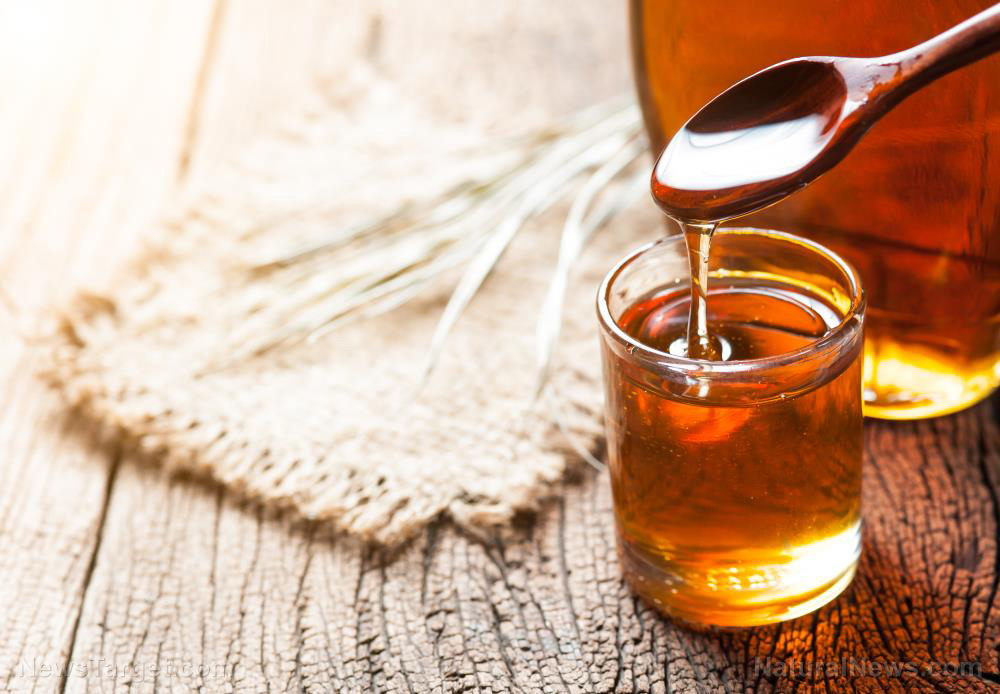Things to keep in mind to avoid natural diseases after SHTF
07/29/2021 / By Nolan Barton

Nature’s diseases feed on the sick and the weak. They will surely feast following an SHTF event when everyone is exposed and vulnerable.
If you’re a prepper, chances are high that you are armed, educated and have a shelter equipped with supplies and gear for such a scenario. But you have to be prepared for a number of different ways Nature’s diseases can get to you.
Survival of the fittest
When disaster strikes and chaos rules, all animals can turn into an active threat anytime. They will try to survive just like humans.
Stopping such a threat might be just a matter of having the right tools for the job, such as rifles, handguns or bow and arrows. Keep your distance from animals after a disaster and avoid any stinging or biting insects.
Both humans and animals will seek one important survival source: food. Maintain proper hygiene when you’re preparing and cooking your food and disposing of waste if you don’t want to attract animals of any kind, including rats and critters that are carrying diseases.
Minimize your exposure to insect bites and stings if you want to reduce your exposure to malaria, the West Nile virus and other diseases insects carry. Your shelter should have screens inside and you should always wear clothes that cover your skin.
Almost any breeze above 1 mph makes it very difficult for mosquitoes to fly. Plug-in fans can be a great deterrent. Just keep the flow of air directed at the lower half of your body as mosquitoes tend to fly very close to the ground to avoid wind. Directing the fan’s force downward will block their approach.
You can also lower your chances of getting bitten by reducing the mosquito population in your living area. Remove any stagnant water in and around your shelter that can turn into mosquito breeding grounds.
Clean water supply
Water is the most important thing survivors need to worry about when maintaining good health after a disaster. Making sure safe drinking water is available to everyone without interruptions becomes critical after a natural disaster.
If the water sources get contaminated, you are pretty much on your own. Some may face dire situations risking dying from dehydration rather than taking their chances with contaminated water. If you take your chances with questionable water, you may suffer from waterborne illnesses such as diarrhea, hepatitis A and E, cholera and many others.
Learn how to purify water. Some may use chlorine since it’s inexpensive, readily available and can kill pretty much all waterborne pathogens.
Heal your wounds
There is a multitude of factors that can inflict wounds during and after a disaster. Getting your skin punctured by a rusty nail, bitten or even getting a small cut can leave you susceptible to tetanus.
Always wash your hands properly with soap and clean water before attempting to clean a wound; avoid touching the wound with your bare hands and use disposable latex gloves; remove all obstructive jewelry and clothing from the injured body; apply direct pressure on the bleeding wound to control the bleeding; clean the wound once the bleeding stops; inspect the wound properly for dirt and other foreign objects; use saline solution to flood the wound gently, and if a saline solution is not available, use bottled water; clean the area around the wound with soap and water; pat the wound to dry (do not rub) and apply an adhesive bandage if available or a dry clean cloth; and administer pain relief medicine if available.
Leave the wound open and do not apply a bandage if you can’t clean the wound properly. Specific injuries, such as punctures and bites, are harder to clean. If you aren’t doing a good job, you will trap bacteria and cause an infection once you apply a bandage.
Social distancing may be beneficial after SHTF
Being around groups of people who are displaced by a natural disaster is not healthy. Understand that becoming part of a crowd exposes you to the diseases the crowd is carrying. (Related: Survival medicine: Can social distance help prevent infections when SHTF?)
Measles, for example, can spread like wildfire in crowded areas. Meningitis, an inflammation of the membranes surrounding the brain and spinal cord, can also spread in crowded areas. Always remember that bacterial meningitis is contagious and is the most dangerous form. It can spread through sneezing or coughing and requires emergency medical care because it can cause permanent damage to the brain or other parts of the body in just a few hours.
You can also acquire acute respiratory infections, which are viral infections that start in the nose, trachea or lungs. If they are not treated in time, they can spread to the entire respiratory system preventing normal breathing function. Prevention is the best method to handle viral infections. Make sure you keep your distance from gatherings and crowds.
No power, more problems
If the power goes out, there are things you should be aware of to avoid illnesses or life-threatening conditions.
The first thing most people will do when the power goes out is to start their generator. If you plan on doing the same thing, make sure you place it in a ventilated area to prevent carbon monoxide buildup. Be aware of the danger of fallen power lines if you go outside.
You should also avoid getting food poisoning. Be cautious of foods with “use by” dates as they might be more susceptible to the growth of food-poisoning bacteria.
Keep in mind that jams and sauces (they’ll usually have a “best before” rather than “use by” date) survive warmer temperatures for longer.
Try to stay cool to avoid heat strokes and other heat illnesses. You can move underground in your basement or improvise an air cooling system using ice (if available) and a portable fan. Do whatever you can to protect yourself from the heat wave.
Follow OffGrid.news for more news related to prepping and life after an SHTF event.
Sources include:
Tagged Under: acute respiratory infections, carbon monoxide, cholera, contaminated water, latex gloves, malaria, natural disaster, prepper, proper hygiene, safe drinking water, SHTF, social distancing, tetanus, water supply, waterborne illnesses, West Nile Virus
RECENT NEWS & ARTICLES
EmergencyMedicine.News is a fact-based public education website published by Emergency Medicine News Features, LLC.
All content copyright © 2018 by Emergency Medicine News Features, LLC.
Contact Us with Tips or Corrections
All trademarks, registered trademarks and servicemarks mentioned on this site are the property of their respective owners.





















